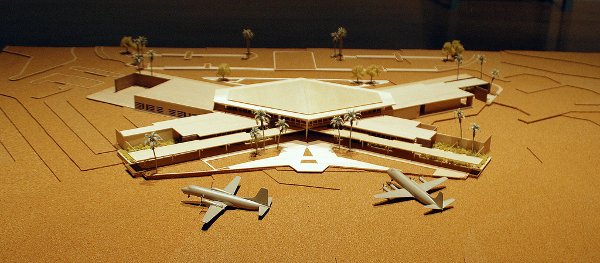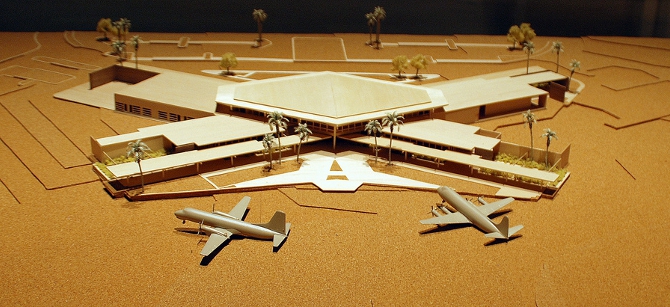 The U.S. contains hundreds of commercial airports, which have massive positive economic effects through transport and trade access. But can cities justify their desires to build new airports, or enlarge old ones, on the basis that they increase local employment levels as well? Using data from 48 U.S. states, Nicholas Sheard takes a close look at how airports, and airport sizes, affect sectoral employment in cities. He finds that while airports have a positive effect on local employment in ‘tradable’ services, such as publishing and financial services, they have next to no effect on manufacturing or on other employment sectors.
The U.S. contains hundreds of commercial airports, which have massive positive economic effects through transport and trade access. But can cities justify their desires to build new airports, or enlarge old ones, on the basis that they increase local employment levels as well? Using data from 48 U.S. states, Nicholas Sheard takes a close look at how airports, and airport sizes, affect sectoral employment in cities. He finds that while airports have a positive effect on local employment in ‘tradable’ services, such as publishing and financial services, they have next to no effect on manufacturing or on other employment sectors.
Federal spending on air transport in the US amounts to around $15 billion annually, a substantial portion of which is allocated to airport construction and enlargement projects. State and local governments also contribute substantial amounts, so that for example of the $4.8 billion spent to build the Denver International Airport in the early 1990s, $4.4 billion was public money. The standard justification for this public spending is that airports have positive economic effects, either by improving the conditions for particular industries or by promoting overall employment. But do airports attract economic activity to their local area, or do cities with stronger growth and larger service sectors simply have larger airports in response to demand for air travel? Using aggregated data from the 48 contiguous states, I test the effect of airports on local employment in particular sectors. The main finding is that airports have a positive effect on employment in tradable services, but no measurable effect on most other sectors.
Despite the level of public spending on airport construction, there is little reliable evidence of the economic benefits of airports. The main reason for this is the difficulty in identifying the effects of airports from data, as airports are constructed partly in response to economic conditions, so simply comparing airport size with economic outcomes is not adequate to infer causality. In addition, the substantial cost of constructing an airport precludes conducting an experiment and, along with the public attention that such large projects attract, limits the potential for finding sources of variation in airport size that are unrelated to recent economic conditions.

The technique I use to identify how airports affect employment is to take the variation in current airport sizes that is explained by a historical allocation of airports – in this case the 1944 National Airport Plan that largely determined airport construction in subsequent decades – and to test the effect of this type of variation on employment in a range of industries such as manufacturing, services, construction, retail trade, and wholesale trade. As the airports were planned according to criteria irrelevant to the success of particular sectors, at least when controlling for some basic factors such as population and physical geography, the planned airports should not be related to sectoral employment except in that they affect the current allocation of airports. To test the robustness of the results to the most apparent threats to this condition, controls for a number of demographic and economic variables from the 1940s are included in some of the regressions.
The main effect of airports is on service sectors that are ‘tradable’ in the sense that they can be produced in one location and transported to another. This includes services such as publishing and financial services that can be produced or delivered using air travel, which facilitates face-to-face contact. The effect is statistically positive and in quantitative terms implies that a 10% increase in airport size in a metropolitan area of 1 million residents would lead to around 1,650 additional service jobs. There is no effect on services that must be consumed where they are produced, such as parking garages, or for which face-to-face contact is not required, such as telephone call centres.
Notably, there is no apparent effect of airports on manufacturing employment, though the products of this sector are tradable. The manufacturing industry presumably depends on contacts between producers and customers, but to a lesser degree than for tradable services.
Of the remaining eight sectors tested, the data exhibit no significant effect on employment in any sector except retail trade, for which there is a positive effect. This effect on retail trade industry is somewhat mysterious. It may be due to the airports attracting tourist business to the retailers, but the lack of an effect on the sectors that include entertainment, restaurants, and accommodation casts doubt on this potential explanation. It may also be due to a subtle effect of airport size on the tastes of local residents, but again it would be unusual for this not to appear for any other sectors.
To test whether the measured effect on the relative size of employment in tradable services represents an aggregate effect or simply substitution from other sectors, I estimated the effects of airport size on the employment rate and on overall growth. The results suggest that airports have no effect on the overall level of employment in the metropolitan area. The positive effect of airports on tradable-services employment therefore appears to represent the specialisation of local activity in that sector, but not the attraction of productive factors from elsewhere.
The results suggest that airport projects are effective for some but not all policy goals: having a larger airport may not increase aggregate local employment, but should affect the employment shares of the industries that are most dependent on air travel. Whether these additional jobs are worth the cost of expanding the airport is another question, as it naturally depends on precise policy objectives. However, the quantitative estimates of the effects of airport size on sectoral employment can be used to guide such analysis.
This article is based on the paper, “Airports and urban sectoral employment”, in the Journal of Urban Economics.
Please read our comments policy before commenting.
Note: This article gives the views of the authors, and not the position of USApp– American Politics and Policy, nor of the London School of Economics.
Shortened URL for this post: http://bit.ly/N4xomY
_________________________________
 Nicholas Sheard – Aix-Marseille School of Economics
Nicholas Sheard – Aix-Marseille School of Economics
Nicholas Sheard is a post-doctoral researcher at the Aix-Marseille School of Economics in the south of France. His research is on urban and regional economics, primarily transportation (mostly related to air travel) and urban housing location.



